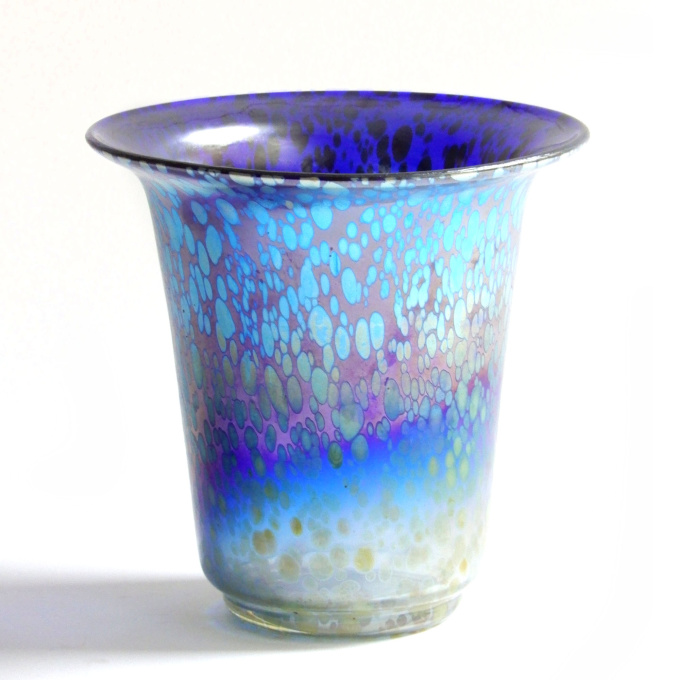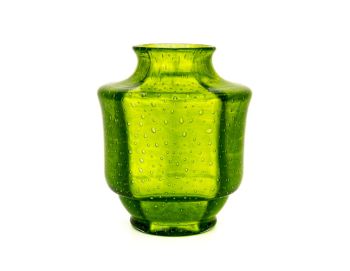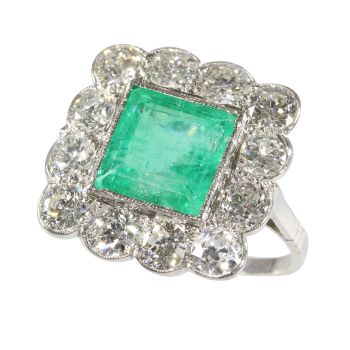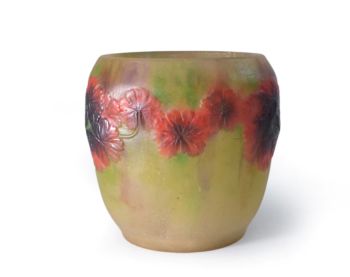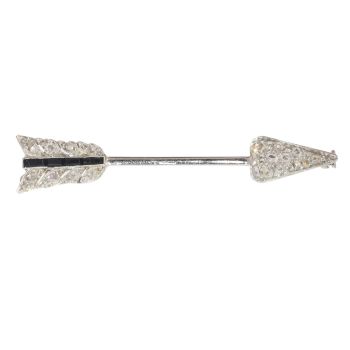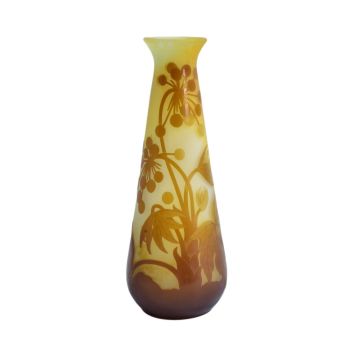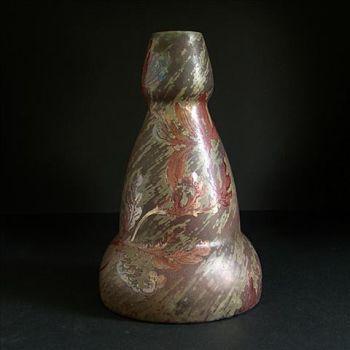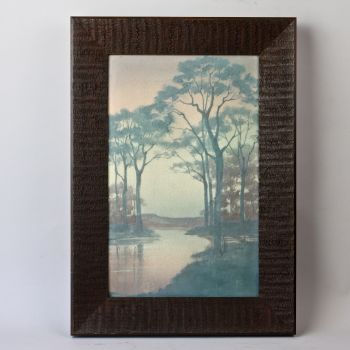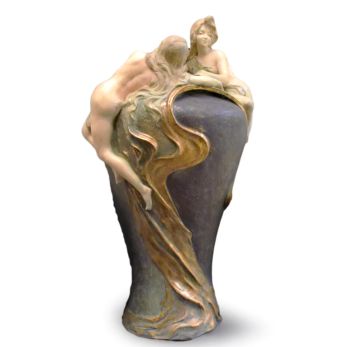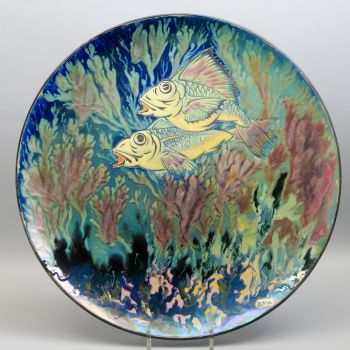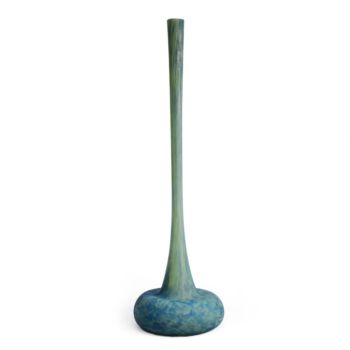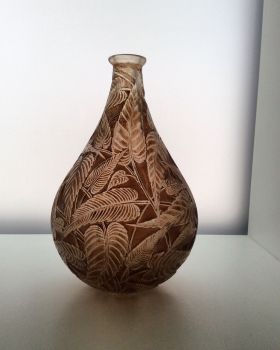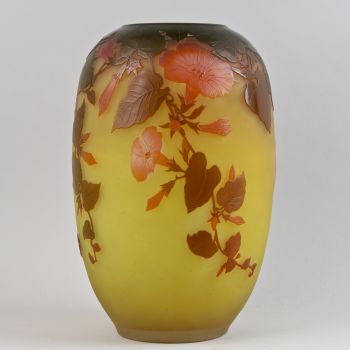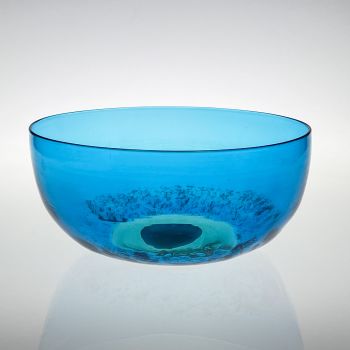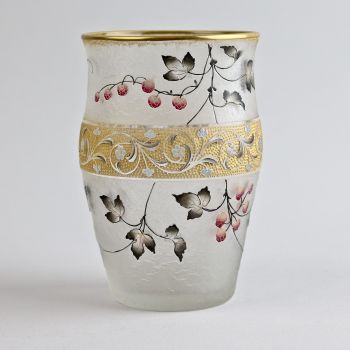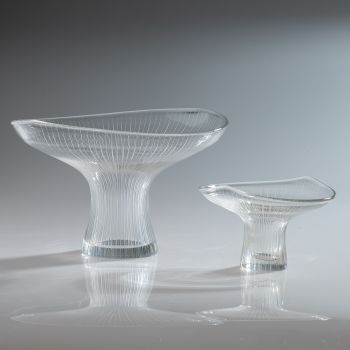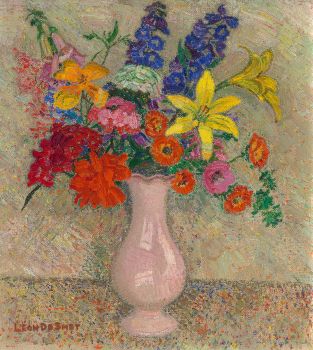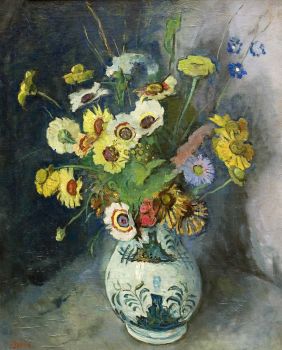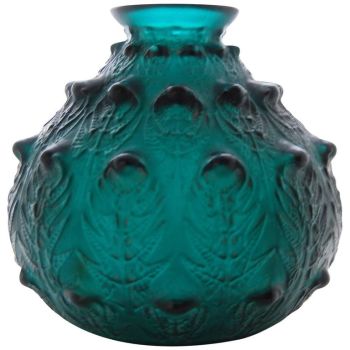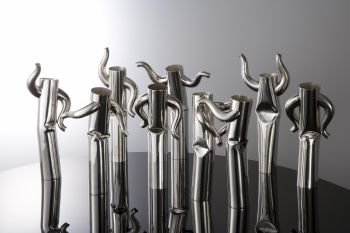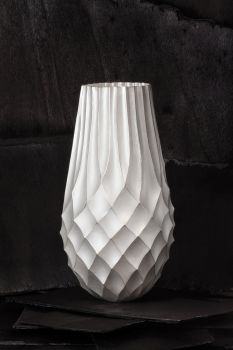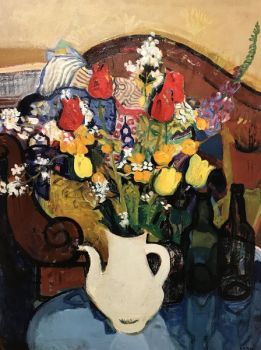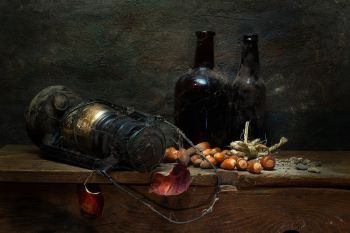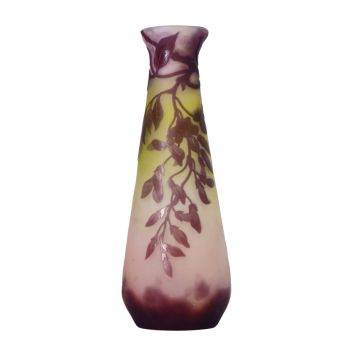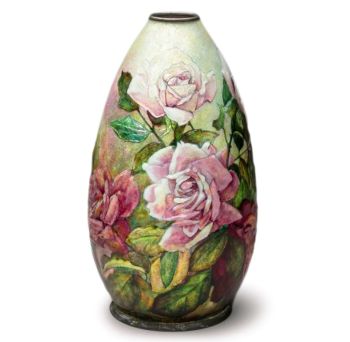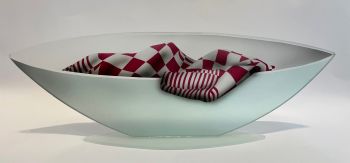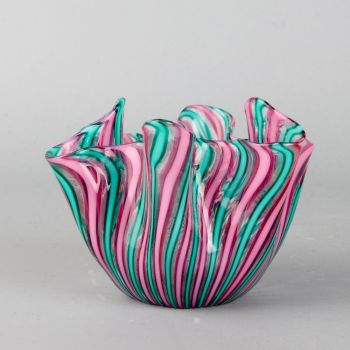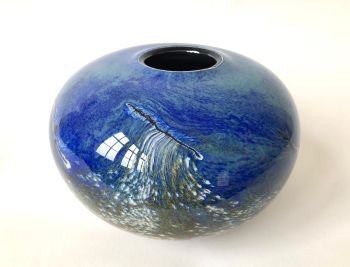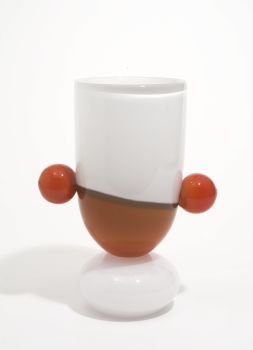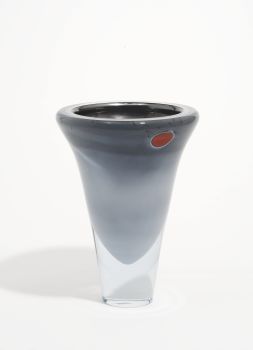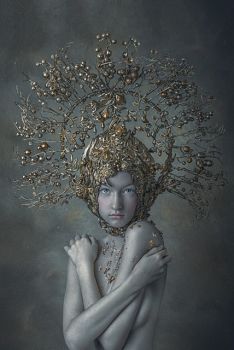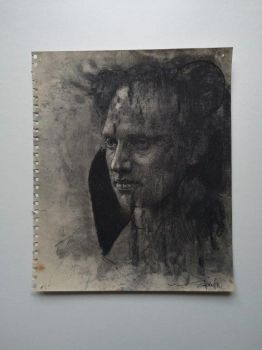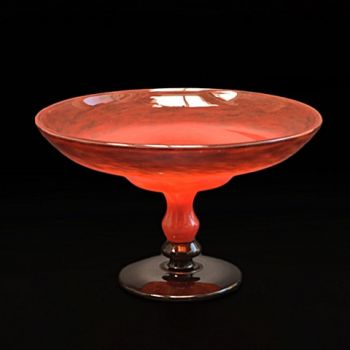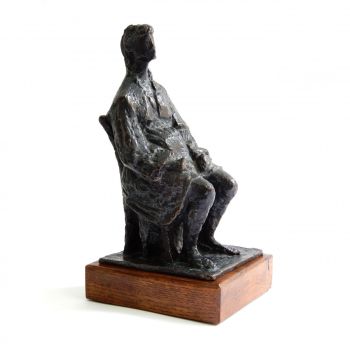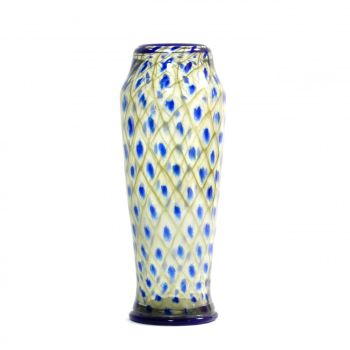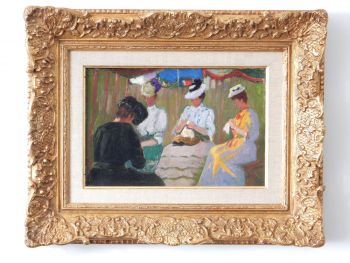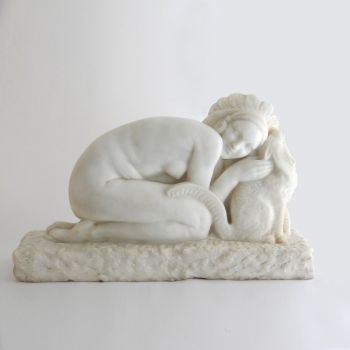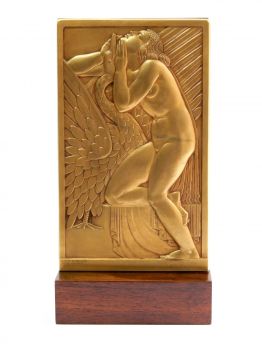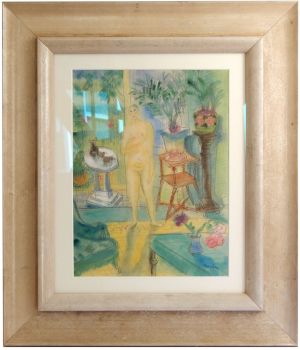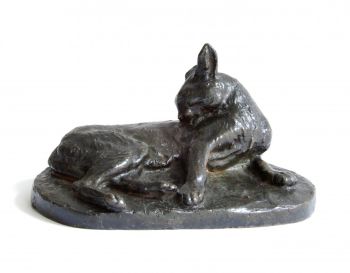Vase with papillon decor 1910 - 1920
Johann Loetz (Lötz) Witwe Klostermühle
Vidrio
13 cm, ø 13 cm
ConditionExcellent
Actualmente no disponible a través de Gallerease
Dille Art
- Sobre la obra de arteBeautiful vase with intense colours. The vase has a flared neck and has a papillon decor in iridescent colours, from light to deep blue, soft green-yellow and violet. The vase is in excellent condition.
About Johann Lötz Witwe:
Lötz/Loetz was founded by Johann Lötz in 1840 and the company was located in Bohemia, in the Czech Republic, at the time Lötz belonged to the Austrian-Hungarian Empire.
In 1879 a grandson of Lötz, Max Ritter-Von Spaun, took over the business from his grandmother, he kept the name Joh. Lotz Witwe.
From that moment on, Johann Lötz Witwe really started to make a name for themselves, they developed new innovative glass techniques, but their design and the bright colours were also completely innovative. They designed special shapes and vases, high end items, which they sold in luxury stores in Vienna, Berlin, Hamburg, Paris, London, Milan, Brussels and Madrid. It soon made them very well known and famous.
It was the period when Art Nouveau or, as it was called in Germany, Jugendstil flourished. They used organic shapes, nature was their example, also for Lötz. They developed beautiful decors, resembling butterfly wings, such as the papillon decor of this vase, often the shapes were organically formed by unevenly shaping the hot glass with tongs, as also flowers are formed. But an octopus or sea shells were also used as examples for their special vases and decors.
Lötz took part in all kinds of World Exhibitions, including the famous 1900 World Exhibition in Paris where they won the grand prize. They have been awarded numerous prizes for participation in World Exhibitions. Max Ritter von Spaun also received special awards for his contribution to the glass industry. In 1883 he was allowed to use the Imperial eagle in their shield and seal, they were also allowed to put "K.K. Private Glass Factory" in front of their name. In 1889 he also received a knighthood from Franz Josef. But other royal houses also did not go unnoticed, he received the Belgian Leopold's order, and the honourable French Legion d'Honneur.
Their designs were loved, including in the United States. Lötz patented some of their special techniques, such as the one they used to make the Phänomen decor. They were able to make iridescent glass. In short, Lötz had become a household name. And it still is.
Lötz also worked closely with other glass manufacturers such as J.&L. Lobmeyer and E. Bakolowits Söhne in Vienna and with Argentor. In addition, Lötz worked closely with various artists, such as Josef Hoffmann, Koloman Moser, Franz Hofstötter, Michael Powolny and other artists of the Wiener Werkstätte. Michael Powolny was responsible for the more stylized tango vases from the 1920s.
The First World War and the end of the Austrian Empire marked a difficult period for Lötz.
Lötz existed until 1940, after a bombing raid the factory was completely burned down. After WWII, the Czech Republic belonged to the satellite states of the Soviet Union, the factory was nationalized, until it was finally closed in 1947.
Lötz glass is still very popular and is collected worldwide, their oeuvre can also be found in many museum collections.
Literature:
- Guiseppe Gappa; 'Le génie verrier de l'Europe', p. 95-107. Pierre Mardaga, Belgique, 1998, p. 95-107.
- Victor Arwas, 'Glass, Art Nouveau to Art Deco', p. 202-212. Academy Editions London 1987,
p. 202-212.
- 'Das Böhmische Glas 1700-1950', Passauer Glasmuseum, Georg Höltl, Passau 1995.
Band IV: Jugendstil in Böhmen, p. 16-133, afbeelding p.57, fig.IV.76.
- Victor Arwas, 'Glass, Art Nouveau to Art Deco', p 202-212. Academy Editions London, 1987. - Sobre el artista
La cristalería Loetz existió en Klostermuhle, Austria, durante poco más de cien años, a partir de 1840. Pero su apogeo fue durante la vida de Max Ritter Von Spaun, nieto del Johann Loetz original que había fundado la empresa.
Von Spaun se hizo cargo de la empresa en 1879 y la dirigió hasta 1908, un año antes de su muerte. Fue asistido por Eduard Prochaska, su especialista técnico, y juntos inventaron, diseñaron y produjeron toda una serie de maravillosos nuevos tipos de vidrio, obteniendo varias patentes y ganando premios en todas las principales exposiciones mundiales durante la década de 1890 y los primeros años de el nuevo siglo.
La empresa Loetz se encontraba entre los líderes en diseño Art Nouveau y especialmente en vidrio artístico iridiscente. El vidrio "Papillon", como el jarrón de la izquierda, a veces se conoce hoy como vidrio "mancha de aceite". Otro colorante favorito de Loetz fue el vidrio irridizado con senderos tirados llamado vidrio "Fenómeno".
Había jarrones irridizados con cintas de colores metálicos que serpenteaban sobre la superficie, y muchos diseños espectaculares con estelas aplicadas de hermosos colores, o simplemente sacadas del cuerpo del vidrio para formar asas o decoración.
Alrededor de 1900, la compañía comenzó a colaborar con diseñadores externos, y algunos grandes artistas diseñaron piezas para Lotz, en particular Joseph Hofmann, Koloman Moser, Maria Kirchner y Hofstatter.
En 1908 Loetz fue adquirido por el hijo de Max Von Spaun, también llamado Max, y aunque luchó financieramente (pasando por la quiebra en 1911 y nuevamente en 1931) hubo varios grandes diseñadores cuyo trabajo fue producido por Loetz durante esos años y a través del arte. período de deco. Estos incluyeron a Adolf Beckert y Michael Powolny.
¿Está interesado en comprar esta obra de arte?
Artwork details
Related artworks
Johann Loetz (Lötz) Witwe Klostermühle
Johann Loetz Witwe – Jugendstil Cobalt Papillon vaas1900 - 1910
Precio a consultarAntiques Emporium
Johann Loetz (Lötz) Witwe Klostermühle
Johann Loetz Witwe - Phänomen Genre 7773 – Orange1900 - 1910
Precio a consultarAntiques Emporium
1 - 4 / 8- 1 - 4 / 24
Johann Loetz (Lötz) Witwe Klostermühle
Johann Loetz Witwe – Jugendstil Cobalt Papillon vaas1900 - 1910
Precio a consultarAntiques Emporium
Johann Loetz (Lötz) Witwe Klostermühle
Johann Loetz Witwe - Phänomen Genre 7773 – Orange1900 - 1910
Precio a consultarAntiques Emporium
1 - 4 / 24René Lalique
Un florero "Fougeres" de color verde oscuro muy raro diseñado por R. Lalique1912
€ 8.950Lennart Booij Fine Art and Rare Items
 curada por
curada porSilla Scheepens
Gabriel Argy-Rousseau
Gabriël Argy-Rousseau – Crabes et Algues vase – 19201920 - 1929
Precio a consultarAntiques Emporium
Johann Loetz (Lötz) Witwe Klostermühle
Johann Loetz Witwe - Phänomen Genre 7773 – Orange1900 - 1910
Precio a consultarAntiques Emporium
1 - 4 / 24Artista Desconocido
Cáliz veneciano alado1650 - 1700
Precio a consultarPeter Korf de Gidts - Antiquairs
René Lalique
Un florero "Fougeres" de color verde oscuro muy raro diseñado por R. Lalique1912
€ 8.950Lennart Booij Fine Art and Rare Items
 curada por
curada porSilla Scheepens
1 - 4 / 24- 1 - 4 / 12

